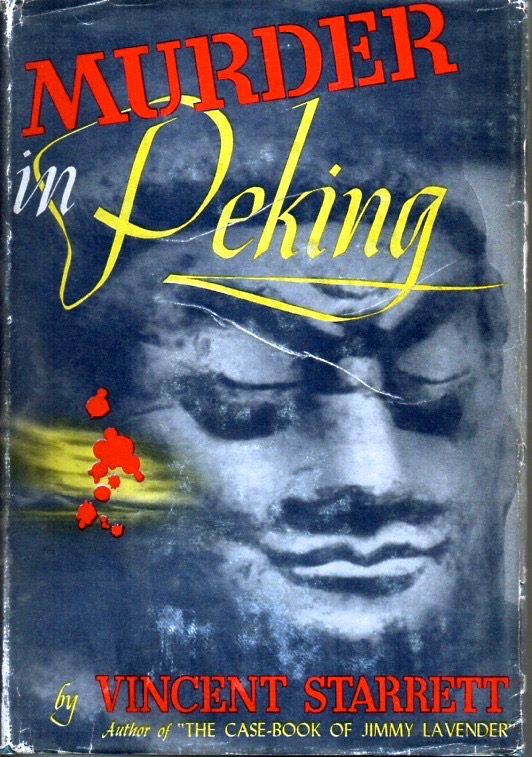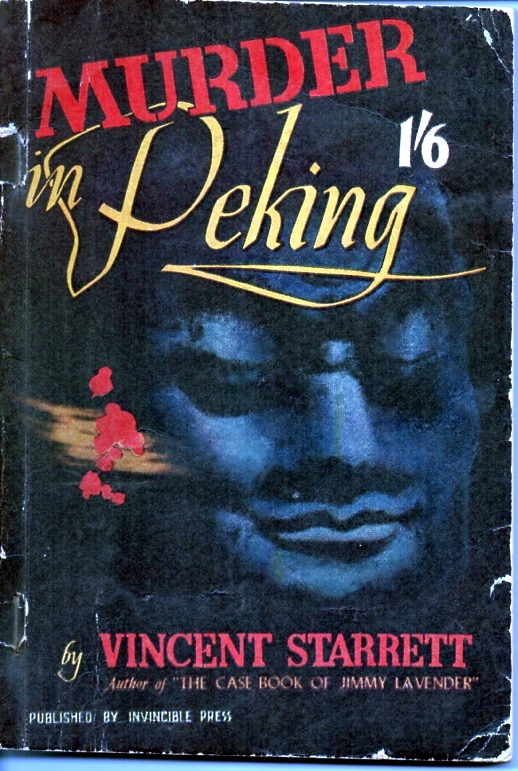The Jimmie/Jimmy Problem
Starrett's most famous detective is Jimmie Lavender. Or is it Jimmy Lavender?
Every Sherlock Holmes fanatic worth his deerstalker knows about the John/James problem. It’s one of the most fundamental of the Canon’s Great Questions and, along with Watson’s wandering war wound, one of my favorite areas of scholarship.
For those who need a refresher: John H. Watson’s wife, for reasons that are entirely unclear, calls him James in “The Man With the Twisted Lip.” Why? There are dozens of theories but I have one favorite. Dorothy L. Sayers famously theorized that James was an Anglicized version of Hamish, the good doctor’s middle name.* (See The More You Know, below.) If you haven’t read her essay in a while, I would highly recommend it. The essay is Golden Age Sherlockian scholarship at its best.
The Philadelphia Inquirer in 1944 reprinted several Lavender short stories. As you can see, the name is Jimmy in the subhed, but Jimmie in the story copy. Why didn't a copy editor catch this?
Turning to Vincent Starrett
In the world of Starrett’s creations, there is a parallel to the John/James problem. It’s the Jimmie/Jimmy problem.
And it’s all Starrett’s fault.
Here’s how it happened: Starrett’s father was a baseball fan, and instilled the love of the most American of all sports in his son. While at a game “I first became aware of a superlative pitcher named Jimmie (sic) Lavender who, for some reason, became a favorite of mine."
Starrett goes on to say: "Possibly I was attracted by his name; at any rate I borrowed it many years afterward, with his permission and gave it to a private detective I had created for the pulp magazines. And that is how it came about that the name of the famous old baseball pitcher appears in large letters on the cover of one of my books.”
Now that is a direct quote from Starrett’s memoirs, Born in a Bookshop, pp. 20-21.
Note how Starrett spells Lavender’s first name: “Jimmie.”
That’s wrong.
His detective was Jimmie. The ballplayer was Jimmy.
Even Starrett couldn't get it straight.
The coverline should read: "Vincent Starrett's Jimmie Lavender."
The confusion begins
For the record: James Sanford "Jimmy" Lavender played five seasons for the Cubs, before being traded to the Philadelphia Phillies for one season. I’ve checked several sources, and they agree that James Lavender’s nickname was spelled “Jimmy” and not “Jimmie.”
In Starrett’s hands, Lavender not only changed the spelling of his first name, but he became “an engaging fellow whose youthful appearance was emphasized by a single plume of white in his thick dark hair. In some of the early adventures he had mismatched eyes, I think, one blue and the other brown, but that curious distinction vanished and I find no trace of it in the episodes gathered into The Casebook of Jimmie Lavender.”
“Three editors were particularly friendly to the Lavender stories, Edwin Baird of Real Detective Tales, T.C. O’Donnell of Wayside Tales, and Harry Maule of Short Stories. All lived in shuddering fear that I would get their popular monthly journals into some appalling libel suit or so it seemed to me when I read their cautious little interpolations; and once indeed I did almost get Maule into hot water by giving one of my criminals the name of a well-known British peer.”
The problem, as I see it, was not the names he gave his villains, but the odd spelling of his detective’s first name.
Here are a few more examples of the Jimmie/Jimmy confusion.
Four examples of the Jimmy/Jimmie problem. The first two are newspaper reprints of the Lavender stories, which credit The Case Book of Jimmy Lavender. The second two dust jackets for Murder in Peking note that Starrett is the author of The Case Book of Jimmy Lavender.
It gets worse
For many years, Lavender was a workhorse for his creator and his adventures were a steady source of income. The initial run of Lavender stories ended in the 1930s, with about 50 short story adventures in all. But for many years thereafter, Starrett would find publications that wanted to reprint his original detective tales. Think of it as literary recycling.
In the 1940s, for example, newspapers began syndicating popular works for their Sunday supplements. Starrett was able to license the rights to several Lavender stories.
The popularity of these syndicated tales may have prompted approval for the first anthology of Lavender's adventures.
And here is the ultimate indignity. In 1944, Gold Label books published an anthology of Lavender short stories. The book is The Case Book of Jimmie Lavender.
But the dust jacket misspells the main character’s first name as “The Case-Book of Jimmy Lavender.”
(There are two other crimes on the just wrapper. The first is the addition of a hyphen between Case and Book. There is no hyphen anywhere else. The second, and more egregious, is that horriddepiction of Lavender. That fellow looks like he's had a stroke and is hardly the handsome amateur crimesolver Starrett described.)
Even here, in a book dedicated to Lavender, the dust jacket designer couldn’t get the name right. ** (See The More You Know, below.)
If the errors bothered Starrett, he didn’t mention it in his memoirs.
But then again, he also mixed up the spelling of the ballplayer with his detective. Maybe he was forgiving of those headline writers and dust jacket designers who did the same.
It’s too bad Dorothy Sayers isn’t around to explain it all.
The More You Know
* Dorothy L. Sayers, "Dr. Watson's Christian Name," in Unpopular Opinions (London: Victor Gollancz, 1946), 148–151.
** Starrett has a lovely dedication in this book: "To Harry E. Maule, friendly editor, who published the first 'Lavender' stories; to Ellery Queen who revived them; to Jimmy Lavender, pitcher for the Old Chicago Cubs, who loaned his attractive name; and to Dr. John H. Watson, formerly of Baker Street, London, who wrote the original prescription."




